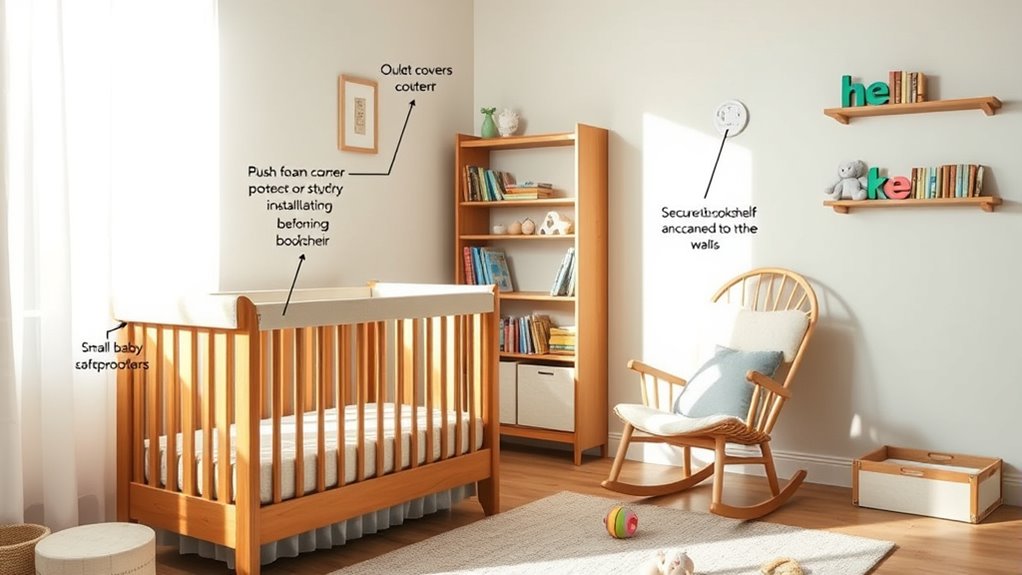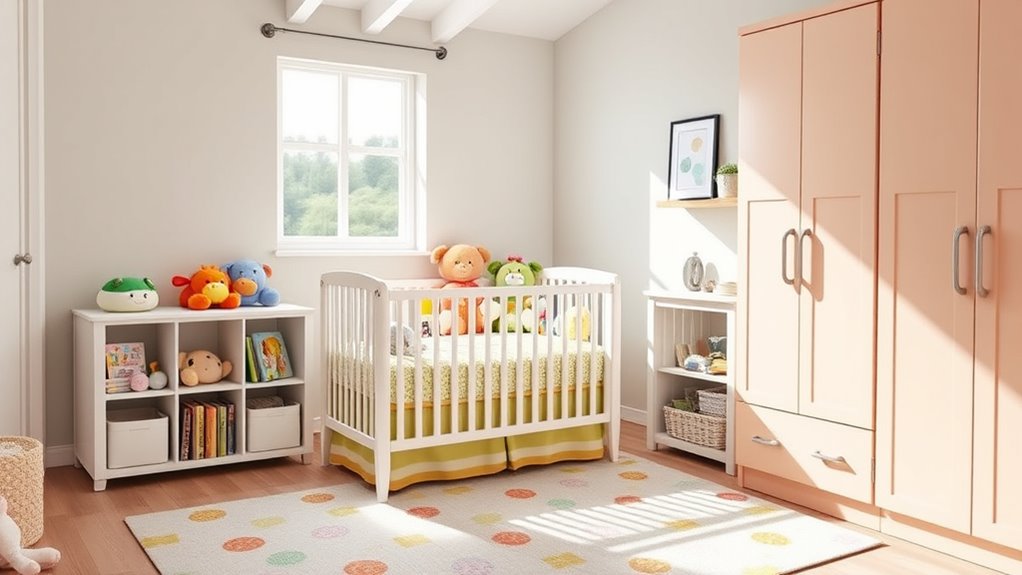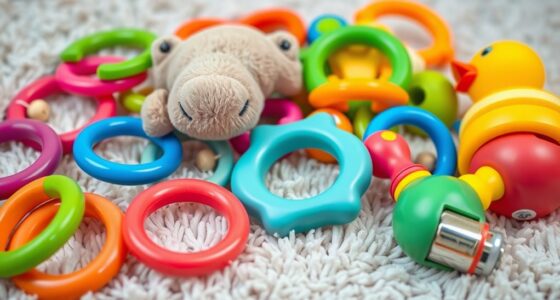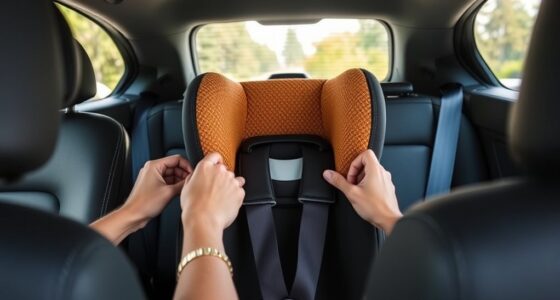To babyproof each room, start by installing smoke alarms and securing furniture to walls to prevent tipping. Use outlet covers and hide cords out of reach to prevent electric shocks. Keep small objects, medications, and cleaning supplies high and locked away. Install safety gates at stairways and supervise water areas like bathtubs. Regularly update safety measures as your child grows, and you’ll create a safer environment that encourages confident exploration. Keep going to discover detailed tips for every part of your home.
Key Takeaways
- Install smoke alarms on every level and develop a fire escape plan.
- Secure furniture, TVs, and heavy items to walls to prevent tipping.
- Use outlet covers and hide cords to prevent electrical hazards.
- Store small objects, medications, and cleaning supplies out of child’s reach.
- Regularly inspect and update safety measures as your child grows and explores.

Are you prepared to keep your little one safe as they start exploring your home? Babyproofing is essential to prevent accidents and ensure your child’s safety from the moment they begin moving around. Start by focusing on fire safety; install smoke alarms on every level of your home and check that they’re working properly. Keep a fire extinguisher nearby, and teach older children or family members how to use it. It’s also wise to create a fire escape plan and review it regularly, so everyone knows what to do if an emergency occurs. Keep matches, lighters, and any flammable items out of your child’s reach, and avoid placing electrical cords or heaters where curious hands can pull or knock them over. These small precautions can make a big difference in preventing fire-related accidents.
Moving on to furniture stability, this is a critical area that can prevent serious injuries. Young children love to pull themselves up and explore their surroundings, but unstable furniture can tip over easily. Secure heavy furniture like dressers, bookshelves, and TVs to the wall using brackets or straps. Remove or anchor unstable items that could fall on your child, and ensure that all furniture is sturdy and in good repair. Avoid placing furniture with sharp edges near areas where your child plays or crawls, and consider using corner protectors on tables and countertops. Keeping furniture stable minimizes the risk of crushing injuries or falls, making your home safer as they become more mobile.
In addition to fire safety and furniture stability, you should also pay attention to electrical outlets and cords. Use outlet covers or safety plugs to block access, and organize cords so they’re out of reach or hidden behind furniture. Remember, small objects, medications, and cleaning supplies should be stored in high, locked cabinets to prevent choking or poisoning. Gates at stairways are a must-have to prevent falls, and always supervise your child around water, whether in the bathtub, sink, or a bucket. Regularly check your home for hazards, and make adjustments as your child grows and their abilities change. Be aware that divorce statistics can influence family dynamics and home safety planning, especially in high-stress situations. Babyproofing isn’t a one-time task; it’s an ongoing process that keeps your home secure and your mind at ease.
Conclusion
By babyproofing your home room by room, you’ll create a safe space where your little one can explore confidently. Some might think it’s overwhelming or costly, but remember, even small changes make a big difference. Starting with the most vulnerable areas can ease the process and save you stress later on. With patience and planning, you’ll turn your home into a secure environment—allowing you to relax and enjoy those precious moments together.








